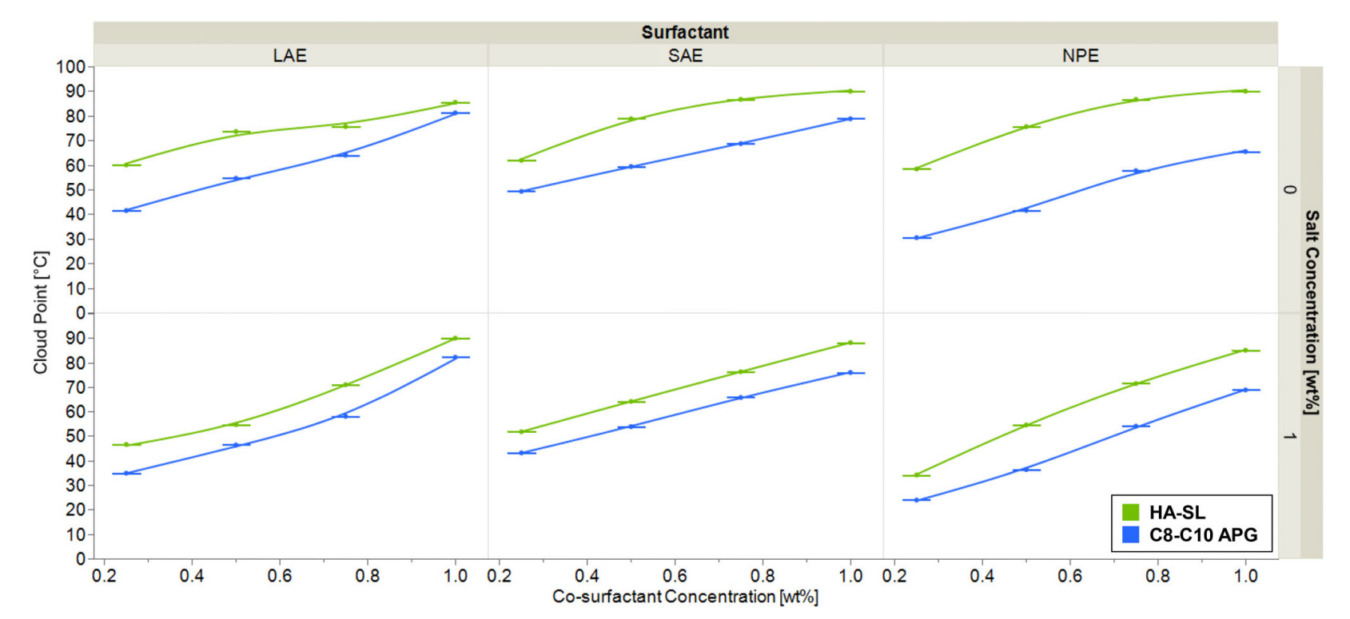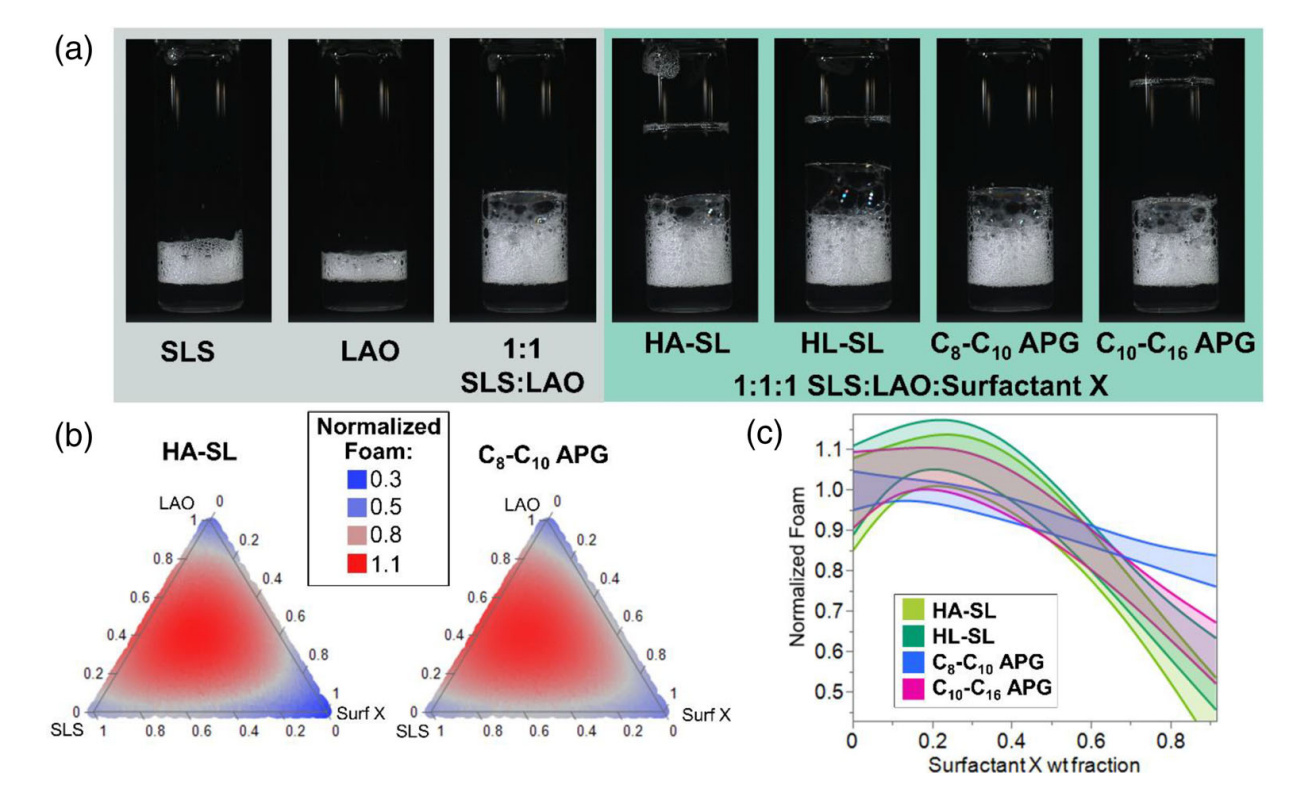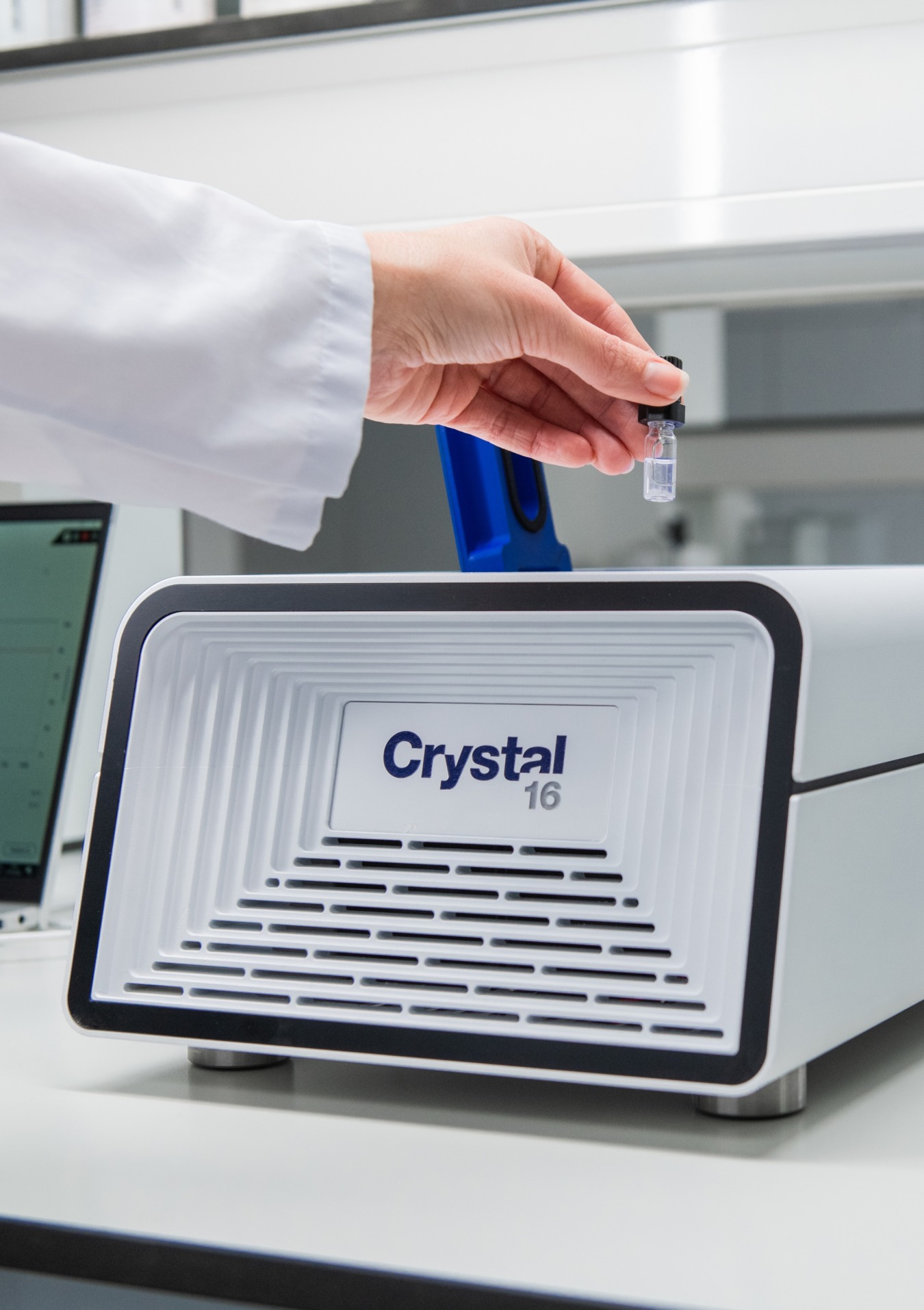Surfactant research using Crystal16
In this recent publication titled The Interfacial Properties of Biosurfactant Mixtures, authored by a team of scientists at The Dow Chemical Company, the Crystal16 instrument was applied in surfactant studies.
The interfacial properties of biosurfactant mixtures were investigated to understand their impact on consumer product formulations, focusing on the mixture of sophorolipids (SLs) with traditional surfactants such as sodium lauryl sulfate (SLS) and lauramine oxide (LAO). The study employed various methods including static and dynamic surface tension measurements, foaming quantification, and cloud point evaluations to assess the effectiveness of SLs compared to alkyl polyglucosides (APGs) in modulating interfacial properties and enhancing sustainability without compromising performance.
Experiment Procedure
For cloud point measurements, the Crystal16 instrument was used. Solutions containing 1 wt% alcohol ethoxylates and 0.25 wt% biosurfactants were prepared and aliquoted into sealed vials. These vials were subjected to a temperature ramp from 20 to 90°C at 1°C/min. The cloud point, indicating phase separation, was recorded as the temperature where light transmission dropped below 100%, allowing for precise assessment of the hydrotropic efficiency of biosurfactants compared to traditional surfactants. Further, the static surface tension was measured using 50 µL surfactant solutions in a 96-well plate with serial dilutions. Dynamic surface tension was determined via the maximum bubble pressure method. Foaming performance was evaluated by shaking 1 mL of 1 wt% solutions.
Results
Cloud Point Elevation:
SLs, particularly acid-rich sophorolipids (HA-SLs), were more efficient than APGs in elevating the cloud points of alcohol ethoxylate solutions. HA-SLs increased the cloud points by over 10°C compared to APGs, indicating their superior hydrotrope function. This effect was consistent across various concentrations and classes of alcohol ethoxylates. with the addition of NaCl, both hydrotropes decreased the cloud points of alcohol ethoxylate surfactants at lower concentrations. However, as the concentration of C8-C10 APG increased, the reduction in cloud points lessened, and at 1 wt% C8-C10 APG, the cloud points of PAE and NPE solutions increased.

Figure: Change in cloud point induced by salt, measured for solutions of 1 wt% alcohol ethoxylate surfactants at various concentrations of acid-rich sophorolipid (HA-SL) or C8 C10 APG surfactant when 1 wt% sodium chloride was added.
Results (continued)
Surface Tension:
The equilibrium surface tension of ternary blends containing SLs or APGs with SLS and LAO was comparable to that of binary SLS/LAO blends. This indicated that SLs and APGs do not significantly disrupt the synergistic interactions between SLS and LAO.
Foaming Performance:
Foaming tests revealed a synergy in foam volume for the binary SLS/LAO blend. Ternary blends with SLs or APGs showed little visual change in foam volume compared to the binary blend, suggesting that the presence of SLs or APGs does not negatively impact foamability.

Figure: Foaming performance of ternary biosurfactant blends. (a) Images of select post-shake surfactant solutions; (b) Model predictions for normalized foam performance value for HA-SL blends and C8 C10 APG blends; (c) Foaming performance versus surfactant X weight fraction for a fixed 1:1: ratio of SLS:LAO
Conclusion
The study concluded that sophorolipids, particularly HA-SLs, can be integrated into traditional surfactant mixtures without compromising interfacial properties. Using the Crystal16, it was found that HA-SLs significantly enhance the cloud points of alcohol ethoxylate solutions more efficiently than APGs. These findings highlight the potential of SLs to improve the sustainability of consumer products by replacing a substantial portion of traditional surfactants while maintaining performance.

References
The research paper discussed above was authored by the following research team at The Dow Chemical Company: Janet R. McMillan, Daniel S. Miller, Caroline Nimako-Boateng, Lauren Wilson, Tzu-Chi Kuo, Micol Frederica Tesoldi, Timothy Young and Aslin Izmitli.
The full paper is published here: https://aocs.onlinelibrary.wiley.com/doi/abs/10.1002/jsde.12777
Curious to learn more?
See what the Crystal16 instrument can do for your solid-state, formulation and process development studies.